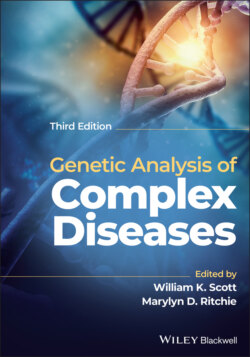Читать книгу Genetic Analysis of Complex Disease - Группа авторов - Страница 32
Introduction
ОглавлениеFor centuries, the hereditary basis of human disease has fascinated both scientists and the general public. The Talmud gives behavioral proscriptions regarding circumcision in sons born after a male sibling who died of a bleeding disorder, suggesting that the ancient Hebrews knew of hemophilia; nursing students in Britain in the 1600s tracked the recurrence of spina bifida in families; and questions as to whether Abraham Lincoln and certain celebrity sports figures had Marfan syndrome sometimes arise in casual dinner conversation.
In many respects, the study of the genetic factors in disease today remains, as it has for centuries, dependent on careful description of human pedigree data in which patterns of transmission from parent to offspring are characterized. Gregor Mendel provided the groundwork for the study of human genetics by carefully constructing quantified observations of the frequency of variable characteristics in the pea plant. The importance of detailed pedigree analysis was later exemplified in the delineation of patterns of transmission of the fragile X syndrome: the most common inherited intellectual disability (Turner et al. 1996).
This chapter explores the underpinnings for observational and experimental genetics. Concepts ranging from laws of Mendelian inheritance through molecular and chromosomal aspects of deoxyribonucleic acid (DNA) structure and function are defined. The chapter concludes with clinical examples of the various types of DNA mutation and their implications for human disease.
